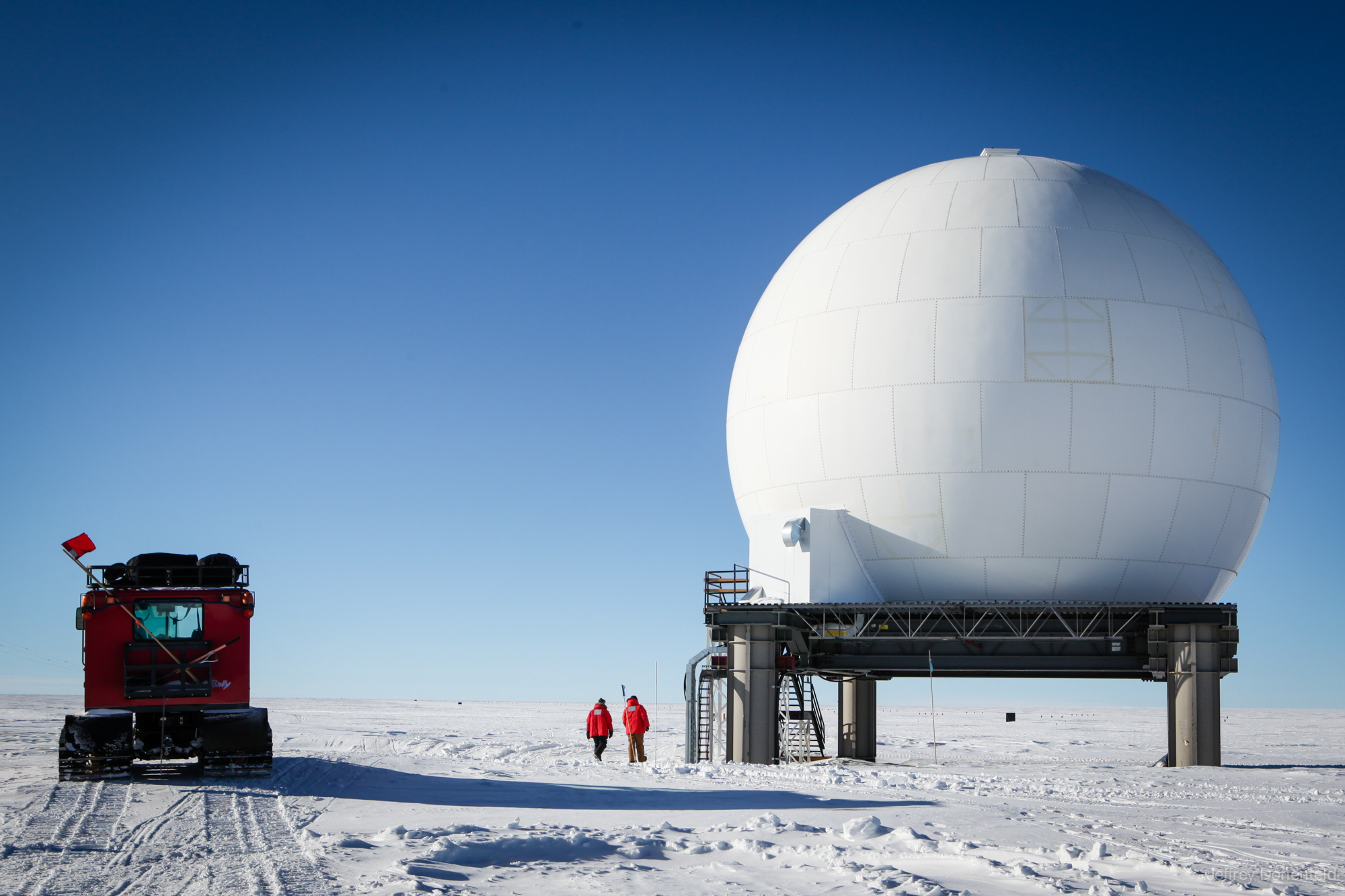The south pole station is remote – very remote. All communications has to happen via some sort of radio link, and the main links for general data and voice from the station is on one of 4 satellite networks – GOES, TDRS, SKYNET, or Iridium. GOES is by far the oldest data link, and uses a very large satellite dish to connect the station to the GOES-3 satellite as is passes southward in its degraded orbit. The GOES-3 satellite orbit is degraded, meaning that it wobbles from the equator both north and south. During the southern part of its daily (daily as in sidereal) orbit, the satellite passes just barely in view of the station – which means that it’s just barely on the horizon. A few days ago, satellite comms specialist Cheryl Seagraves took me on a special tour of the GOES satellite uplink facility.






Comments
7 responses to “The South Pole’s Satellite Communications Link: The Golf Ball”
I started following your blog after seeing the post on the NOLS list. Not only are the locations unbelievable, but you are a great photographer!
Thanks! :)
[…] pole! That’s the Golf Ball we’re passing on the […]
[…] Update – see more of the Golf Ball, which houses the GOES satellite link hardware here. […]
[…] Golf Ball […]
[…] pole! That’s the Golf Ball we’re passing on the […]
very very good informations..many thanks.